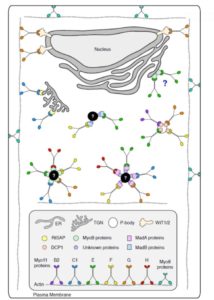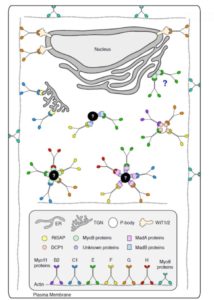Update on Myosin Motors: Molecular Mechanisms and Physiological Functions

 By
By
The cytoskeleton is the main organizing principle that defines not only the distribution of cellular components within cells but also the overall shape and growth pattern of cells and entire multicellular organisms. This function is particularly evident in plant cells where, for example, the organization of cortical microtubules determines the orientation of cellulose microfibrils in the growing cell wall and hence the direction of cell expansion and, ultimately, organ and plant shape (Szymanski and Cosgrove, 2009). Over the years, it has become clear that many functions of the cytoskeleton in eukaryotic cells depend heavily on motor proteins that use the energy stored in adenosine triphosphate (ATP) to generate mechanical force along the length of cytoskeletal elements (Vale, 2003). This is also true for plant cells that use both microtubule based kinesin motors and actin-based myosin motors to transport various cargo along these cytoskeletal filaments as well as to modify organization of these same filaments (Madison and Nebenführ, 2013, Geitmann and Nebenführ, 2015).



